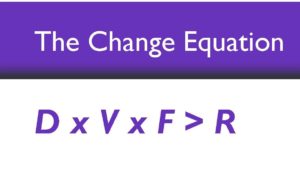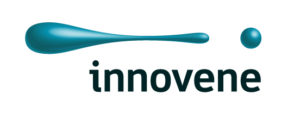 Like many leaders, you may get ahead of your organization when leading change. You see what needs to change because it’s part of your role. However, to lead change successfully, it is critical for you to create an opportunity for others to see what you see … and for you to understand what they see.
Like many leaders, you may get ahead of your organization when leading change. You see what needs to change because it’s part of your role. However, to lead change successfully, it is critical for you to create an opportunity for others to see what you see … and for you to understand what they see.
“I’m ready to make change, but my team isn’t.” One of my clients, John, a company president, was clear about the changes he wanted to make but convinced that his leadership team did not want to go with him. He had assessed the company’s strategy and determined that without change, they wouldn’t achieve the needed business results. When I inquired about the conversations he had with the team, he said, “I shared my ideas for a new strategy, and they weren’t interested.”
I often hear about this type of situation – someone proposes a solution and becomes frustrated when others are not enthusiastically signing up to follow them and implement the proposed change.
As a leader you are always leading change. Your work is to lead your organization from the present into the future … a future that is better than the present. Whether that change is a slow steady progression or requires a significant shift, to be successful you need to generate the energy for the change to be successful.
- How effective are you at managing change?
- Do your efforts feel hit or miss?
- How well do you understand the key factors that lead to successful change?
In this article you will learn a simple yet powerful framework that describes the conditions necessary for change to occur. You can use it to design a change process that flows well from the beginning or to help you understand why a particular change effort is stuck and how to get it moving.
The Algebra of Change: D x V x F > R
Successful change requires dissatisfaction with the status quo (D), a positive vision for the future (V), and practical first steps (F) to get started. If any of these are missing there will not be enough energy to overcome whatever resistance exists … and there is always resistance.
For change to occur the three variables on the left of the equation are multiplied together. So dissatisfaction, vision, and first steps must all exist (be greater than zero) for the left side to be greater than the resistance, the energy pushing against the change. Ignoring any of them will cause your change to get stuck, take longer, cost more, or fail.
Dissatisfaction (D) with the current state is what pushes or propels a change – it creates motivation. Without dissatisfaction, there is not enough energy for a change process to begin. Dissatisfaction can be directed at something specific in the current situation, or with the current level of results.
No matter how clear the vision and first steps, without dissatisfaction there is no “reason” to change, so you stay stuck.
Vision for the future (V) is the force that pulls the change – it provides direction. It is the positive possibility for the future. Vision must be a compelling description of what you want in the future, not simply the absence of something in the present. Vision needs to be enough of a stretch from what exists today to make it worth an effort to get there, and yet seem achievable. When you have dissatisfaction and first steps, but no vision for the future you create an experience of “change of the month” – trying lots of things, but nothing “sticks” because there is no clear direction.
First Steps (F) are actions you can take to begin the move from the present toward the desired future – a path forward. Clarity about some first steps creates a sense of capability and hope. When you have dissatisfaction and a positive vision for the future, but don’t know what the steps are to get started, you get frustrated and stay stuck. You must have a path forward in order to feel you can get started.
Resistance (R) is a force that slows or stops movement. It represents the risks and barriers to the change – the perceived cost of change. It is normal and natural to encounter resistance – some resistance always exists – it’s part of our biology. Some risks and barriers cannot be changed and others can be influenced to change.
The good news is that you can influence each of these 4 variables. You increase the energy for a specific change by raising the variables on the left-hand side (D, V and F), and / or decreasing the variable on the right-hand side (R).
This framework works for any intentional change – organizational or personal.
Applying the framework for change involving only one person is simpler because there is only one person’s D, V, F and R to consider. Organizational change is more complex because of the greater number of stakeholders involved.


